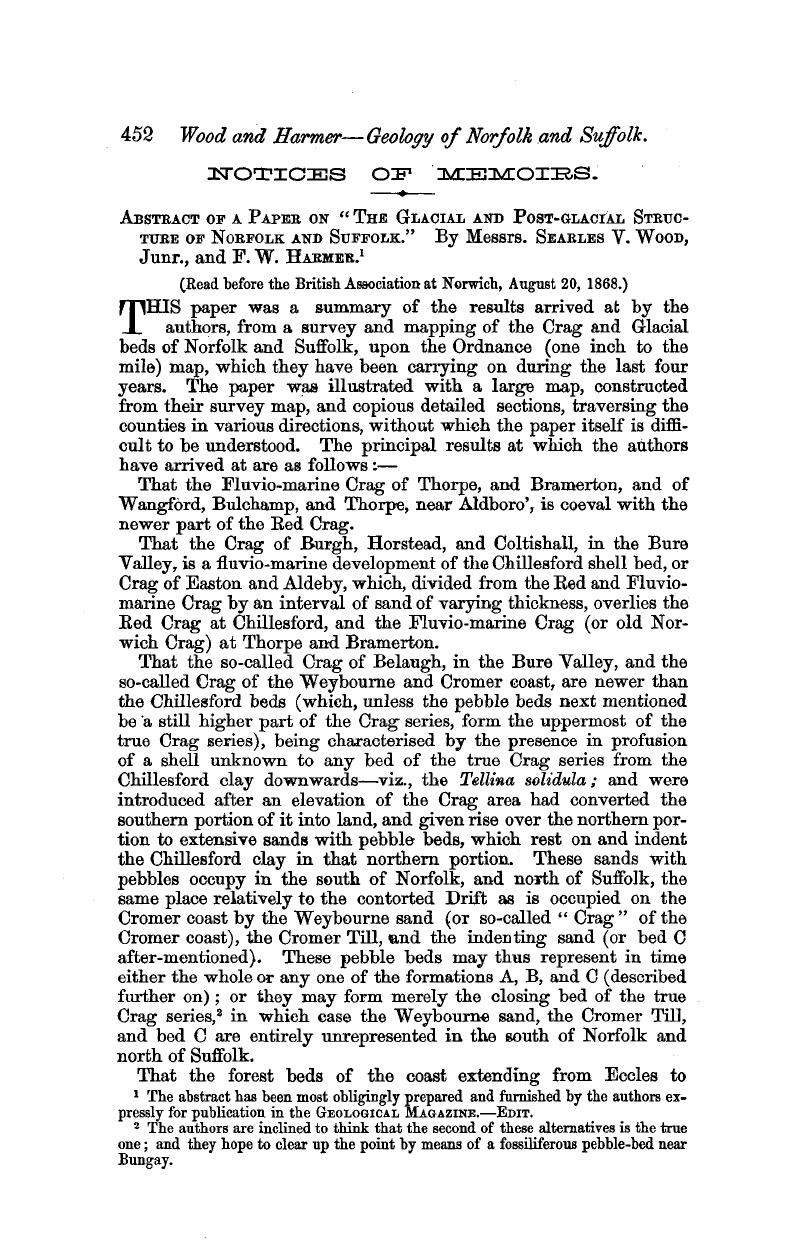No CrossRef data available.
Article contents
Notices of Memoirs
Published online by Cambridge University Press: 01 May 2009
Abstract

- Type
- Notices of Memoirs
- Information
- Copyright
- Copyright © Cambridge University Press 1868
References
page 452 note 1 The abstract has been most obligingly prepared and furnished by the authors expressly for publication in the Geological Magazine.—Edit.
page 452 note 2 The authors are inclined to think that the second of these alternatives is the true one; and they hope to clear up the point by means of a fossiliferous pebble-bed near Bungay.
page 453 note 1 The authors would observe that the position of the bed yielding wood and Mammalian remains beneath the Middle Glacial sands at Kessingland Cliff in Suffolk, seems, from its position relatively to the Chillesford Clay, two miles distant, to be clearly subsequent to the close of the Crag series; but whether this bed be synchronous with the whole of the Forest and freshwater deposits of the Cromer coast, or whether the latter may not represent a much longer duration of land surface—a duration embracing the period of the Kessingland bed, but reaching back into the Crag period—must be determined by the palæontological evidence only.
page 456 note 1 In the small map of the Glacial beds of the east of England, printed by one of the authors for private circulation in 1865, the centre of Norfolk, where these Postglacial sands and gravels so extensively occur, was represented as principally occupied by the sands and gravels of the Middle Glacial series. This error, which the prosecution of their work has detected, the authors desire to call to notice.Google Scholar


